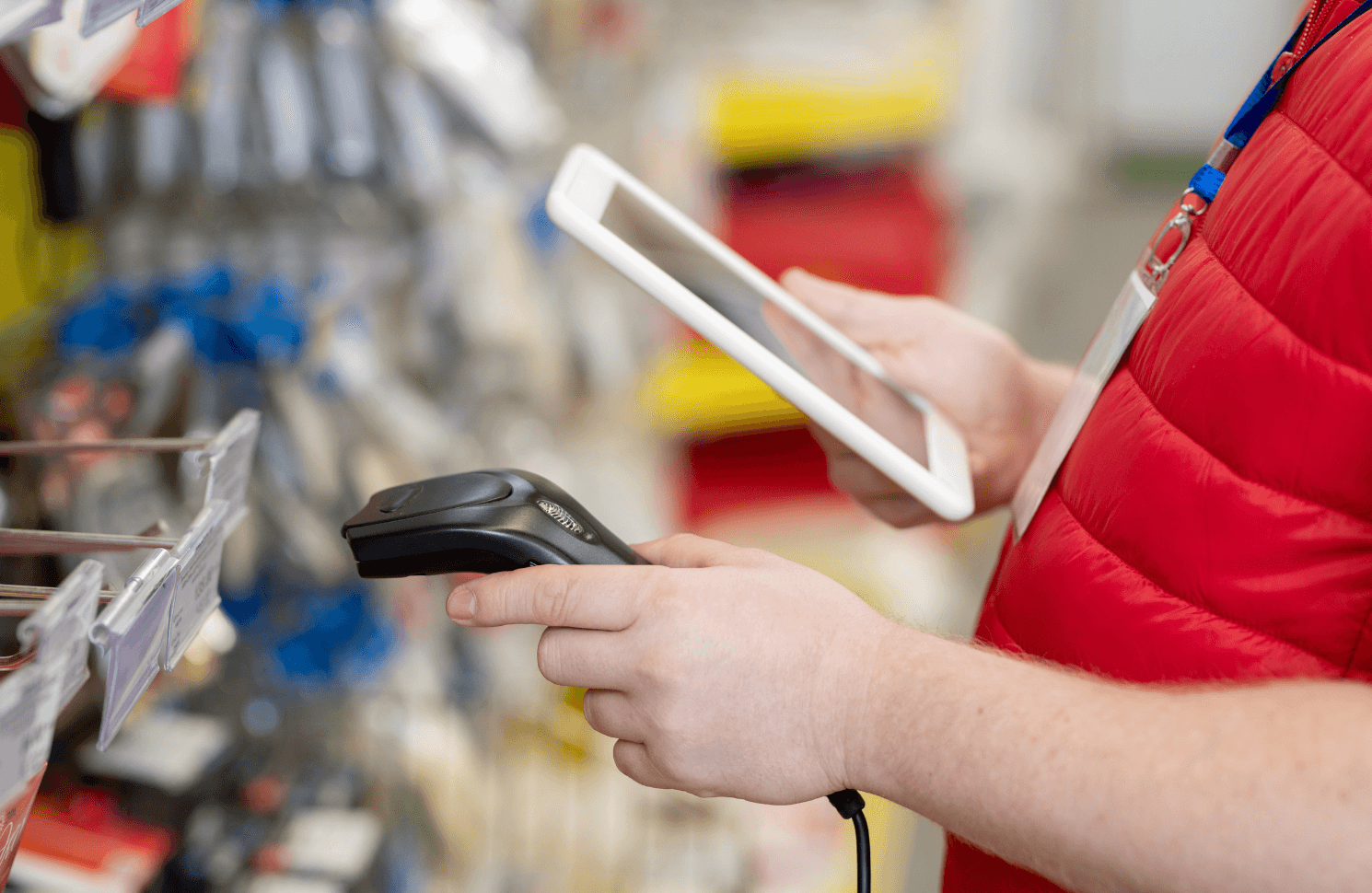

Modernizing the digital shelf for better CPG ROI
OCT. 23, 2025
6 Min Read
Outdated product listings aren’t just frustrating for customers; they can directly erode a company’s revenue.
For consumer packaged goods (CPG) brands, this stark reality highlights how crucial a modern “digital shelf” strategy is to growth. The digital shelf encompasses all the online touchpoints where product data appears (retail sites, search results, mobile apps, etc.), and when that information is inconsistent or slow to update, sales suffer. Technology leaders now recognize that optimizing the digital shelf must be more than an IT project; it’s a strategic business initiative aimed at measurable outcomes. By championing digital shelf modernization as part of a broader digital transformation, CIOs enable faster product launches, better customer experiences, and ultimately stronger ROI from e-commerce investments.
Business-first digital shelf modernization aligns technology with tangible results. This approach unites marketing, supply chain, and data teams around a single source of truth for product content, turning the online shelf into a growth engine. Instead of siloed systems and manual fixes, companies adopt agile processes that ensure accurate, up-to-date listings everywhere a customer might search or shop. The payoff is clear: modernizing the digital shelf drives higher conversion rates, greater brand loyalty, and improved profitability. When CIOs treat product data management and digital shelf analytics as core capabilities, CPG brands can transform their online presence into a true driver of revenue and ROI.
key-takeaways
- 1. Treat the digital shelf as a core operating capability that ties product content, data, and e-commerce execution to measurable ROI.
- 2. Replace siloed updates with a single source of truth and agile workflows to cut time to shelf and remove errors across retailers.
- 3. Use analytics to monitor share of search, content quality, and conversion so every change links directly to revenue impact.
- 4. Apply AI to audit listings, enrich attributes, and scale content improvements while protecting brand consistency.
- 5. Align IT, marketing, and supply chain around clear goals, governance, and metrics so digital shelf investments show concrete business results.
Fragmented product data is undermining CPG e-commerce performance

In many CPG organizations, product information lives in disconnected spreadsheets, outdated databases, and separate departmental systems. This fragmentation creates a hidden drag on e-commerce performance. For example, one channel might show an old price or a missing product image while another has the updated details, confusing customers and hurting trust. These inconsistencies aren’t just technical issues; they have real business impact. Shoppers rely on accurate content to make purchase decisions, and if they encounter errors or gaps, they often move on. In fact, 75% of global consumers form a negative opinion of a brand when they find incomplete or inaccurate product information online, and 44% have abandoned a purchase because of missing details.
Inconsistent data also wreaks havoc on search visibility; if a product title or attribute isn’t aligned with common search terms, that item might as well be invisible on the digital shelf. Siloed, slow processes mean that even when errors are noticed, it can take weeks for manual fixes to roll out across retailer sites, during which sales opportunities are lost. It’s no surprise that CIOs and IT leaders feel frustrated when significant e-commerce investments fail to deliver expected ROI. Often, the culprit is not a lack of demand, but disjointed product data dragging down online performance. To turn things around, companies first need to acknowledge that fragmented data and manual upkeep are undermining their e-commerce potential. This sets the stage for a new, more unified approach to managing the digital shelf.
“Business-first digital shelf modernization aligns technology with tangible results.”
Modernizing the digital shelf delivers speed, consistency, and higher conversion

Modernizing the digital shelf is all about replacing those slow, error-prone processes with a unified, agile system for product content. By doing so, CPG brands can eliminate data silos and ensure every online channel always reflects the latest, best version of each product’s story. Crucially, this modernization isn’t just for IT’s sake. It directly improves business outcomes by increasing speed, consistency, and conversion rates. Embracing modern digital shelf practices means faster updates, richer content, and a seamless customer experience that ultimately drives more sales. Below are several key benefits that come with changing their digital shelf management:
- Single source of truth for product data: A modern digital shelf is built on a centralized product information platform that all teams and channels draw from. This ensures every retailer site, marketplace, and digital catalog displays consistent, up-to-date information, eliminating contradictions and errors that confuse shoppers.
- Faster content updates and product launches: With integrated tools and automated workflows, brands can update product details or roll out new items to all channels in minutes rather than weeks. Agile digital shelf processes dramatically shorten time-to-market, meaning promotions and new products reach consumers at the speed of business (not IT backlogs).
- Improved search visibility and discoverability: High-quality, optimized content is the key to winning prime digital shelf space. Modernization enables teams to enhance product listings with SEO-friendly titles, comprehensive attributes, and high-quality images, thereby helping products rank higher in search results. By appearing prominently where online shoppers look, brands capture more traffic and consideration.
- Higher customer conversion and trust: When product listings are rich and accurate, with comprehensive descriptions, specifications, and reviews, shoppers feel confident hitting “Add to Cart.” A modern digital shelf reduces the friction that leads to abandoned carts by answering customer questions upfront. The result is a boost in conversion rates and fewer returns, since buyers get exactly what they expected.
- Scalable omnichannel consistency: Digital shelf modernization lets CPG companies govern product content across every e-commerce and retail partner simultaneously, maintaining consistency as they expand to new platforms. This unified approach enables a brand’s online presence to scale without compromising quality or increasing manual effort, supporting seamless growth into new markets and channels.
With these improvements, CPG brands turn the digital shelf into a competitive advantage. A centralized, well-managed product content system cuts out costly delays and errors, allowing the business to respond instantly to market changes (like adjusting a product description based on trends or fixing a stock issue before it hurts sales). Perhaps most importantly, modernization directly impacts the bottom line. Companies have seen online conversion rates climb by as much as 20–50% after delivering richer, more accurate product content to consumers. By speeding up content delivery and ensuring every listing is doing your product justice, a modern digital shelf translates digital investments into measurable sales growth. This momentum carries into the next phase of digital shelf excellence: using data and analytics to continuously refine and maximize ROI.
Analytics and AI turn digital shelf activity into measurable ROI

Modernizing product content and processes is only the beginning. Once CPG brands have a solid digital shelf foundation, the next step is to use analytics and AI to convert shelf activity into actionable insights. With today’s e-commerce tools, CIOs and their teams can monitor exactly how each product is performing in real time and tie those metrics back to business results. This data-driven feedback loop means every tweak on the digital shelf can be evaluated for its impact on traffic, conversion, and sales. Finally, making online product presence a quantifiable ROI driver rather than a guessing game. Two areas in particular are making up how companies optimize the digital shelf:
Real-time insights from digital shelf analytics
Modern digital shelf platforms provide a wealth of real-time data on how products are discovered and purchased online. Brands can track metrics like search ranking, product page views, “share of shelf” (visibility relative to competitors), and conversion rates for each item and channel. These analytics turn the digital shelf into a live dashboard of shopper behavior, allowing teams to spot issues or opportunities instantly. For example, if a certain product’s conversion rate is lagging, analytics might reveal that its content score (completeness of titles, images, descriptions) is below benchmark: a signal to improve the listing. If a high-traffic item isn’t appearing on the first page of results, the team can respond by adjusting keywords or boosting retail media for that SKU. By continually analyzing how changes in content or pricing affect customer engagement, companies create a cycle of continuous improvement. This agile optimization pays off in concrete terms: one global CPG brand, after investing in digital shelf analytics and regular content tuning, saw an 8.5% year-over-year increase in online sales by fine-tuning its product listings and availability based on real-time data. In short, analytics make the digital shelf fully transparent and optimizable, so every decision is guided by evidence and linked to ROI metrics.
AI-driven content optimization and demand response
Artificial intelligence is becoming a game-changer for digital shelf management. AI tools can automatically audit product listings for compliance and quality, flagging missing information or inconsistent formatting across hundreds of SKUs in seconds. More impressively, AI algorithms now assist in generating enhanced content, from auto-tagging product attributes to writing “romance copy” descriptions at a scale and speed humans alone can’t match. This helps ensure every product page is as informative and engaging as possible, lifting conversion potential. AI is also powering dynamic pricing and inventory adjustments on the digital shelf: for instance, algorithms can detect when a competitor runs out of stock or raises prices and recommend that the CPG brand adjust its own pricing to capture demand. By analyzing consumer behavior patterns, machine learning models help predict which product content changes (such as emphasizing a certain feature or bundling products) will resonate best with target shoppers.
The result is a digital shelf that doesn’t just react to trends, but anticipates them. As companies mature in their use of these technologies, every aspect of digital shelf performance becomes optimized in real time, from content quality to assortment mix, maximizing the return on inventory and marketing spend. Crucially, AI and analytics also provide the hard numbers that CIOs can take to the board: clear correlations between digital shelf improvements and revenue lift, conversion upticks, or margin gains. This cements the digital shelf’s role as a measurable ROI engine for the business.
CIOs connect digital shelf modernization to business outcomes

For CIOs and CTOs in the CPG sector, one of the most valuable aspects of digital shelf modernization is its direct line to business outcomes. Unlike some IT projects that may struggle to quantify results, improvements in the digital shelf show up clearly in metrics that matter: higher online sales, better profit margins, and increased customer lifetime value. Forward-thinking technology leaders, therefore, approach the digital shelf as a strategic capability that aligns with corporate KPIs, not just an operational fix. They begin by establishing cross-functional ownership of product content, ensuring that marketing, e-commerce, and supply chain teams work in lockstep with IT. This unity breaks down silos and positions product data as a shared asset, driving revenue. From there, CIOs set specific goals for modernization initiatives, such as cutting the time to update product info from days to hours, or improving the average content completeness score across all SKUs. Each goal is tied to an anticipated business benefit (for example, faster updates supporting a goal of quicker time-to-market for new products, which in turn drives incremental revenue). By framing the project in these terms, technology leaders secure buy-in across the organization – everyone from the CMO to the sales VP can see how a better digital shelf will help hit their targets.
Crucially, modern digital shelf programs include a robust measurement plan. CIOs track key performance indicators like organic search placement, conversion rate per product, and the ratio of e-commerce sales to total sales, creating a clear before-and-after picture. When the numbers move in the right direction, it validates the investment and builds momentum for further innovation. And the numbers do move: companies that excel at product data management and rapid content syndication often report significantly stronger financial performance. In one analysis, brands that adopted modern product information management achieved up to 5.5× better operating margins than those sticking with fragmented approaches. This kind of result stems from multiple wins: higher sales through better conversion, lower costs through efficiency, and even reduced returns due to accurate listings. For CIOs, highlighting such gains is key to changing the perception of digital shelf projects from a cost center to a value creator. It shifts the narrative to business outcomes, showing that a dollar spent on digital shelf improvement is a dollar (or more) added to the bottom line. Ultimately, by tightly linking digital shelf modernization efforts to revenue growth, market share gains, and profitability, IT leaders solidify their role as strategic partners in the C-suite – using technology to directly accelerate business success.
“Analytics make the digital shelf fully transparent and optimizable, so every decision is guided by evidence and linked to ROI metrics.”
Lumenalta drives ROI with a modern digital shelf strategy
Building on the imperative to align digital shelf initiatives with concrete business outcomes, Lumenalta’s approach to digital shelf modernization keeps ROI front and center from day one. Lumenalta works alongside CIOs as a partner in transformation, treating the digital shelf not as a one-off IT fix but as a continuous, business-driven program. This perspective means every recommendation and implementation is tied to what will speed up time-to-market, increase online sales, or optimize costs for CPG brands. By deploying cloud-native product data platforms and automation, our team ensures that product information flows seamlessly across systems and channels, eliminating silos and delays in a way that immediately boosts efficiency and consistency. From the outset, Lumenalta helps establish cross-functional governance for the digital shelf, uniting marketing and operations stakeholders so that technology solutions are directly mapped to business needs. The result is a modernization roadmap that not only upgrades tools but also streamlines processes and roles to support faster execution and better judgment.
In practice, Lumenalta’s business-first mindset translates to rapid, iterative delivery of digital shelf improvements with measurable impact. We engage with clients in an agile co-creation model, quickly piloting enhancements like centralized PIM (Product Information Management) systems, AI-driven content audits, and integrated analytics dashboards, and then scaling what works. Each increment is evaluated against key metrics (such as an uptick in conversion rate or a reduction in update cycle time) to verify value. This iterative approach minimizes risk and maximizes time-to-value, which is crucial for CIOs seeking to deliver quick wins to the board. Equally important, Lumenalta emphasizes knowledge transfer and capability building within the client’s team. By the end of a project, the organization isn’t just left with new technology. It has a stronger data culture and processes to sustain continuous digital shelf optimization. Lumenalta’s goal is to empower CPG leaders to turn their digital shelf into a self-fueling engine of growth, where ongoing improvements are part of the DNA and every change is aligned with a strategic business outcome. In a place where the quality and agility of your online product presence can make or break market share, this partnership-driven, ROI-focused approach is how Lumenalta helps CIOs deliver real co-value and measurable profitability through technology.
table-of-contents
- Fragmented product data is undermining CPG e-commerce performance
- Modernizing the digital shelf delivers speed, consistency, and higher conversion
- Analytics and AI turn digital shelf activity into measurable ROI
- CIOs connect digital shelf modernization to business outcomes
- Lumenalta drives ROI with a modern digital shelf strategy
- Common questions about modernizing the digital shelf
Common questions about modernizing the digital ahelf
Modernizing the digital shelf raises numerous questions for IT leaders and business stakeholders alike. The concept touches multiple domains, from data management to e-commerce marketing, and it’s natural to seek clarity on how it all comes together. Below, we address some common questions that CPG executives often ask about digital shelf modernization and its impact on ROI. These answers aim to provide clear, concise insights into the strategies and benefits discussed above, serving as a quick reference for anyone looking to elevate their brand’s online product performance.
How does digital shelf modernization improve ROI for CPG brands?
What are the key benefits of digital shelf modernization for a CPG company?
How can CPG brands effectively optimize their digital shelf?
What role do analytics and AI play in digital shelf modernization?
How can a CPG company measure the success of its digital shelf initiatives?
Want to learn how modernization can bring more transparency and trust to your operations?






